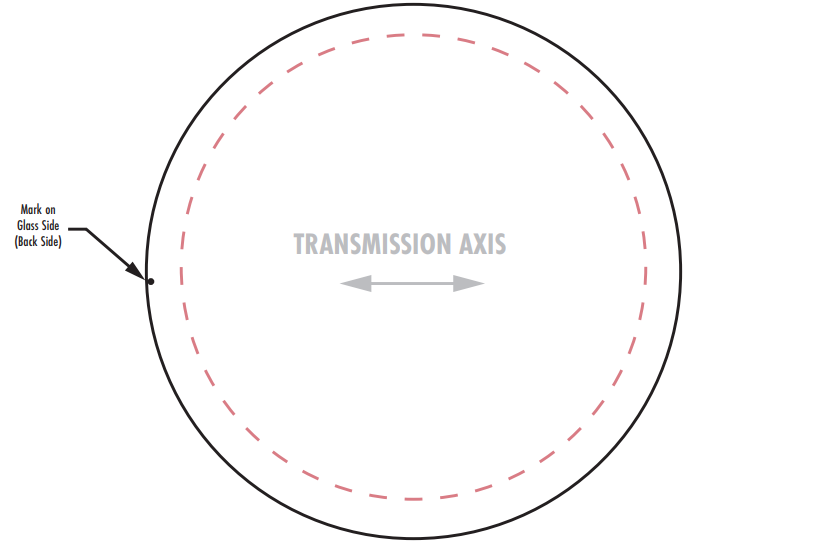
UV Wire Grid Linear Polarizers have high transmission from 240 - 400nm, making them ideal for applications in the ultraviolet (UV) or deep UV. S-polarized light reflects off the wire grid of these polarizers while p-polarized light is transmitted. These polarizers provide a wide acceptance angle, uniform brightness and contrast, and high grid uniformity. UV Wire Grid Linear Polarizers are used in biomedical, forensic, photo-alignment, spectroscopic, security, semiconductor manufacturing, and UV curing applications. Visible Wire Grid Polarizers and Infrared (IR) Wire Grid Polarizers are also available.
Note: These polarizers should be handled with care to avoid touching the wire grid surface to prevent damage to the part.

These optics require special handling to avoid damage and ensure long-term performance. Proper handling, cleaning, and storage are essential to maintain optical quality. Explore our Optics Cleaning Resources for step-by-step guides and best practices. For personalized assistance, Email us or Chat with our technical support team.
or view regional numbers
QUOTE TOOL
enter stock numbers to begin
Copyright 2023, Edmund Optics India Private Limited, #267, Greystone Building, Second Floor, 6th Cross Rd, Binnamangala, Stage 1, Indiranagar, Bengaluru, Karnataka, India 560038
California Consumer Privacy Acts (CCPA): Do Not Sell or Share My Personal Information
California Transparency in Supply Chains Act
The FUTURE Depends On Optics®